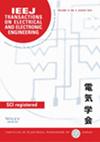Ngan Nhat Kim Nguyen, Cuong Van Anh Le, Tuan Minh Vu, Dung Quang Nguyen, Thuan Van Nguyen, Vu Trong Nguyen, Dung Huu Nguyen
求助PDF
{"title":"越南达克省M'Drak地区面波多通道分析确定横波速度","authors":"Ngan Nhat Kim Nguyen, Cuong Van Anh Le, Tuan Minh Vu, Dung Quang Nguyen, Thuan Van Nguyen, Vu Trong Nguyen, Dung Huu Nguyen","doi":"10.1002/tee.70089","DOIUrl":null,"url":null,"abstract":"<p>Multichannel analysis of surface wave (MASW) plays a vital role in researching shallow geological structures through building their shear wave velocity models. The field phase velocity data in the frequency domain, achieved after traditionally processing field seismic data in the time–distance domain, is inverted to build the true shear velocity model. We conducted two MASW surveys to understand the geological environment at M'Drak District, Dak Lak Province, Vietnam. The results can reveal three layers with a depth of up to 30 m. In the interest area, the first layer is interpreted as loose clay soil up to 20 m deep, with its shear velocity range from 200 to 500 m/s, which can be responsible for landslides. Being considered as an extremely weathered fault rock, the second layer can have a thickness and shear wave velocity of 3–5 m and 500–800 m/s, respectively. The third one is analyzed as moderately weathered fault rock, firm, and stable thanks to its high shear wave velocity values. The MASW method helps to detect the low velocity layer that may relate to a weak soil zone. This near-surface loose clay soil in the survey area needs reinforcement before construction because of safety. Comprehensive foundation preparation work is necessary to prevent future landslides and ground subsidence. © 2025 Institute of Electrical Engineers of Japan and Wiley Periodicals LLC.</p>","PeriodicalId":13435,"journal":{"name":"IEEJ Transactions on Electrical and Electronic Engineering","volume":"20 11","pages":"1896-1900"},"PeriodicalIF":1.1000,"publicationDate":"2025-07-09","publicationTypes":"Journal Article","fieldsOfStudy":null,"isOpenAccess":false,"openAccessPdf":"","citationCount":"0","resultStr":"{\"title\":\"Determination of Shear Wave Velocity Using Multichannel Analysis of Surface Wave in M'Drak District, Dak Lak Province, Vietnam\",\"authors\":\"Ngan Nhat Kim Nguyen, Cuong Van Anh Le, Tuan Minh Vu, Dung Quang Nguyen, Thuan Van Nguyen, Vu Trong Nguyen, Dung Huu Nguyen\",\"doi\":\"10.1002/tee.70089\",\"DOIUrl\":null,\"url\":null,\"abstract\":\"<p>Multichannel analysis of surface wave (MASW) plays a vital role in researching shallow geological structures through building their shear wave velocity models. The field phase velocity data in the frequency domain, achieved after traditionally processing field seismic data in the time–distance domain, is inverted to build the true shear velocity model. We conducted two MASW surveys to understand the geological environment at M'Drak District, Dak Lak Province, Vietnam. The results can reveal three layers with a depth of up to 30 m. In the interest area, the first layer is interpreted as loose clay soil up to 20 m deep, with its shear velocity range from 200 to 500 m/s, which can be responsible for landslides. Being considered as an extremely weathered fault rock, the second layer can have a thickness and shear wave velocity of 3–5 m and 500–800 m/s, respectively. The third one is analyzed as moderately weathered fault rock, firm, and stable thanks to its high shear wave velocity values. The MASW method helps to detect the low velocity layer that may relate to a weak soil zone. This near-surface loose clay soil in the survey area needs reinforcement before construction because of safety. Comprehensive foundation preparation work is necessary to prevent future landslides and ground subsidence. © 2025 Institute of Electrical Engineers of Japan and Wiley Periodicals LLC.</p>\",\"PeriodicalId\":13435,\"journal\":{\"name\":\"IEEJ Transactions on Electrical and Electronic Engineering\",\"volume\":\"20 11\",\"pages\":\"1896-1900\"},\"PeriodicalIF\":1.1000,\"publicationDate\":\"2025-07-09\",\"publicationTypes\":\"Journal Article\",\"fieldsOfStudy\":null,\"isOpenAccess\":false,\"openAccessPdf\":\"\",\"citationCount\":\"0\",\"resultStr\":null,\"platform\":\"Semanticscholar\",\"paperid\":null,\"PeriodicalName\":\"IEEJ Transactions on Electrical and Electronic Engineering\",\"FirstCategoryId\":\"5\",\"ListUrlMain\":\"https://onlinelibrary.wiley.com/doi/10.1002/tee.70089\",\"RegionNum\":4,\"RegionCategory\":\"工程技术\",\"ArticlePicture\":[],\"TitleCN\":null,\"AbstractTextCN\":null,\"PMCID\":null,\"EPubDate\":\"\",\"PubModel\":\"\",\"JCR\":\"Q4\",\"JCRName\":\"ENGINEERING, ELECTRICAL & ELECTRONIC\",\"Score\":null,\"Total\":0}","platform":"Semanticscholar","paperid":null,"PeriodicalName":"IEEJ Transactions on Electrical and Electronic Engineering","FirstCategoryId":"5","ListUrlMain":"https://onlinelibrary.wiley.com/doi/10.1002/tee.70089","RegionNum":4,"RegionCategory":"工程技术","ArticlePicture":[],"TitleCN":null,"AbstractTextCN":null,"PMCID":null,"EPubDate":"","PubModel":"","JCR":"Q4","JCRName":"ENGINEERING, ELECTRICAL & ELECTRONIC","Score":null,"Total":0}
引用次数: 0
引用
批量引用


 求助内容:
求助内容: 应助结果提醒方式:
应助结果提醒方式:


